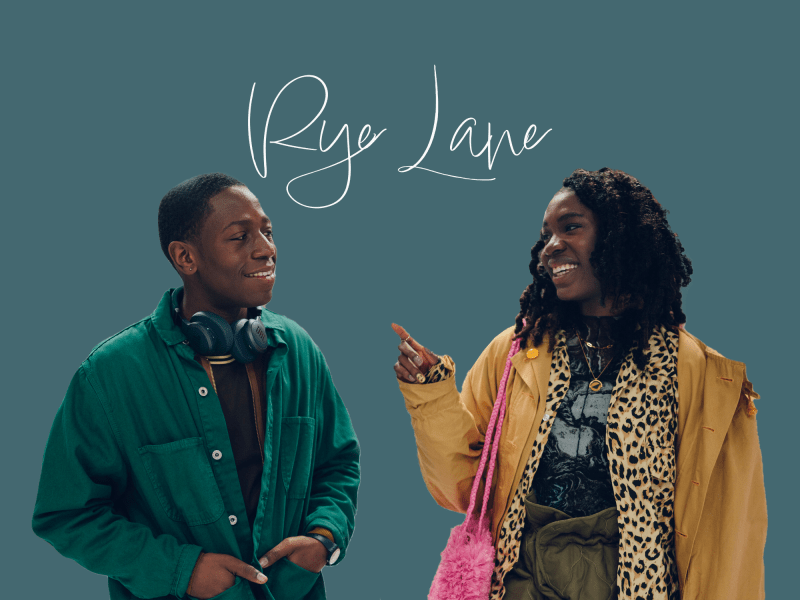The paradox of modern romance is that social media, which you used to document your love, ensures no relationship ever truly leaves you alone, even after the breakup.
“Rye Lane,” Raine Allen-Miller’s feature directorial debut, exemplifies this perfectly. We meet Dom (played by David Jonsson) — who is three months removed from the end of a six-year relationship after his girlfriend cheated on him — sobbing in the bathroom stall at a friend’s gallery exhibition opening. It is not a dignified weep, but the blubbering of a wounded creature who insists on reopening his wounds by looking at the social media feed of his perfidious ex-girlfriend. In an amusing meet-cute (that’s not very cute), fellow gallery attendee Yas (played by Vivian Oparah) overhears his breakdown, and their first interaction ends with Dom making a plea for privacy in a public bathroom.
Breakups may be a heavy subject matter, but “Rye Lane” twists it around in a delightful, rom-com manner. Two people cross paths and spend the day together while sifting through the facts of why their respective relationships ended.
Notably, it is a rare story that centers on Black Britons. It is full of “blink and you’ll miss it” moments that depict the richness of Black British culture. From a flashback to Dom’s failed attempt to take his ex-girlfriend on a romantic date at Morley’s chicken shop to the visit to a Jamaican auntie’s function, the film lovingly depicts the workaday elements of Black life.
As Dom and Yas embark on their meandering quest through South London in their respective green and yellow jackets — a nod to the colors of the Jamaican flag — the film uses flashbacks to depict the writing-on-the-wall moments. As such, the audience sees both sides of a breakup. For example, Yas claims she broke up with her boyfriend of a year and a half because she grew tired of his tortured artist act and penchant for being a killjoy. However, the latter half of the film shows the separation was not quite as she initially depicts it.
The motif of perspectives within a relationship is driven home through the movie’s cinematography. Cinematographers Olan Collardy and Allen-Miller continually use camera work to play with multiple points of view as the protagonists traipse through memory lane. The film features creative shots done in portrait mode, from below eye level or through the fisheye lens (an ultra wide-angle lens that produces strong visual distortion). The lens is an intriguing portrayal of the fallacy of social media: painting yourself in the most flattering light may lead to narrative distortion.
Looping tracking shots are used to show Dom and Yas stroll through Rye Lane Market, and sometimes the camera stays still and allows characters to walk into the frame. The audience can directly experience an unedited, organic recording of the scene, granting them an intimate view of the location.
Jonsson and Oparah’s sensational performances further bring to light the emotions underlying their interactions. From the braggadocio stances they adopt to impress each other to the outrage when they realize their exes moved onto new relationships, Jonsson and Oparah masterfully telegraph joy, sadness and incredulity.
The actors also succeed in fleshing out their characters. Dom’s hands are in his jacket pockets at times and likely balled into little fists. Even when he’s relaxed, he still holds tension in his body. By contrast, to embody Yas’ winsome effervescence, Oparah vacillates between big sweeping gestures and sly facial expressions. Yas is delightful, and it is a wonder the character could ever feel a moment of self-doubt about her beauty and magnetism.
Ultimately, the charm of a heartbreak film shines through in the romantic tension of “Rye Lane.” Bad relationships and breakups can force a person to turn inward — it feels as if there is no reason to emerge from one’s shell if it means getting harmed again. Can Yas and Dom relearn to be vulnerable with someone new? As the narrative shows, vulnerability isn’t a weakness — it’s the highest form of bravery.
No matter which side of a split you’re on, a breakup raises an all-important question — what do I need to change about myself to be accepted for who I am? “Rye Lane” shows that the key to moving forward is accepting yourself… and perhaps deleting pictures of your ex.
Editor’s Note: This article is a review and includes subjective thoughts, opinions and critiques.
